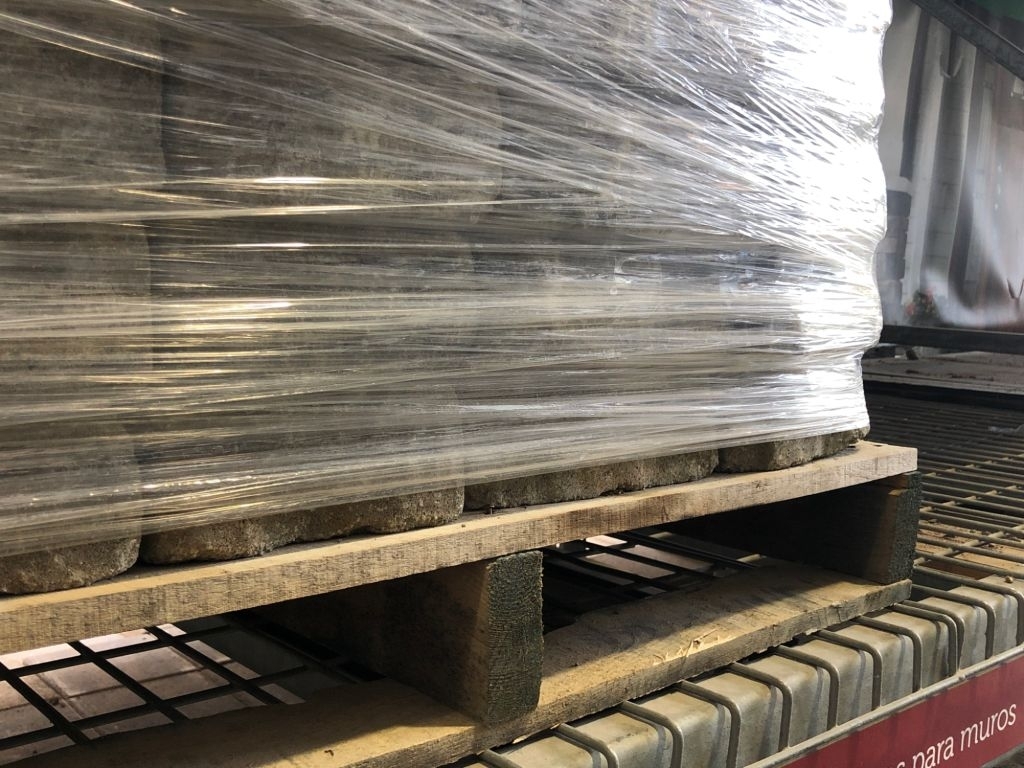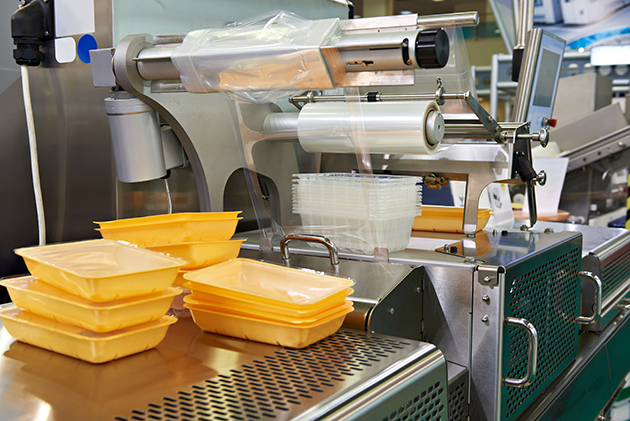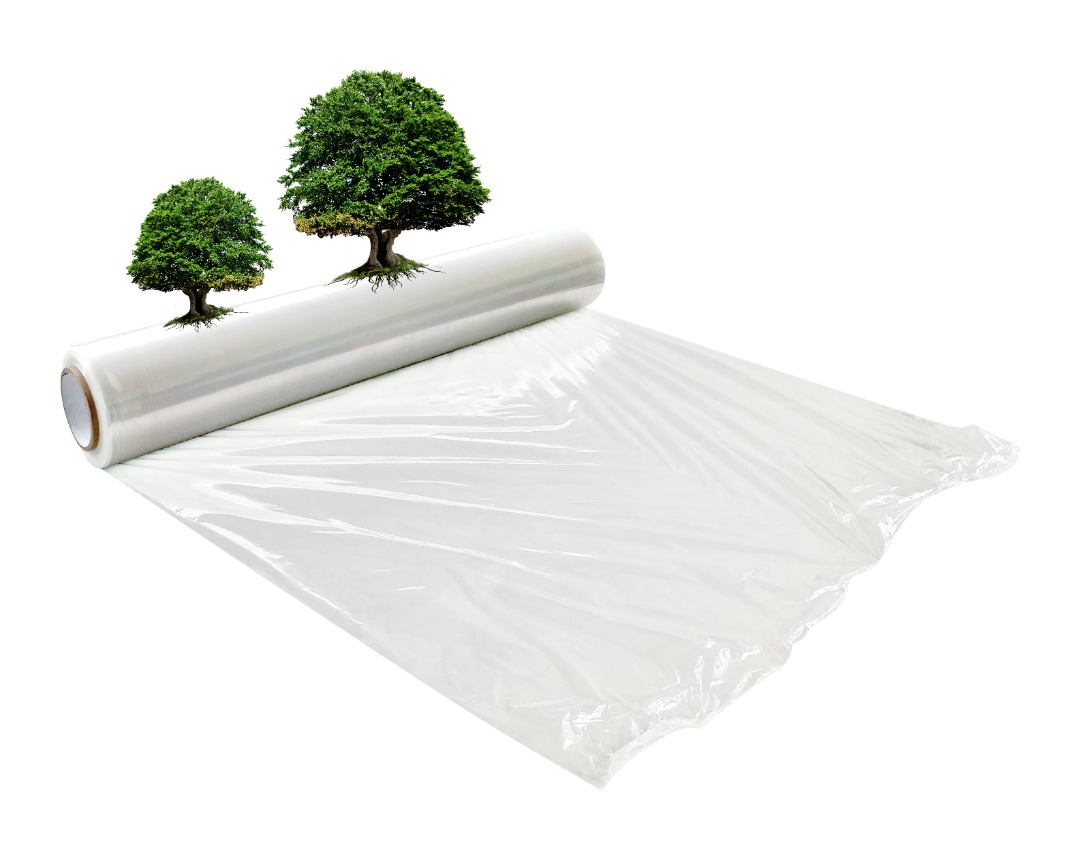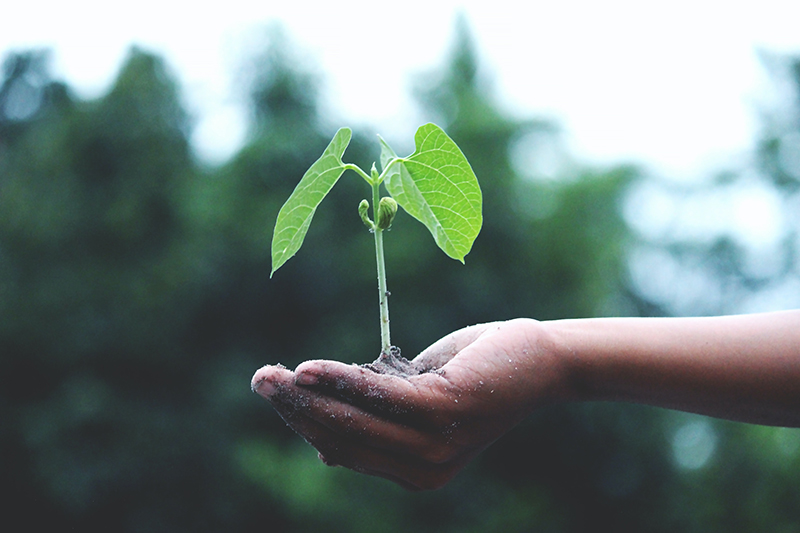Delve into the crucial role of recycling in the plastic packaging industry. Learn why recycling is essential for sustainability and the environment.
Continue readingSustainability In The Plastic Industry: Is It Possible?
There is a growing movement around the topic of sustainability in the plastic industry.
We know that many people have voiced their concerns about how plastic pollution and waste greatly affect the ocean’s pollution level.
An alarming report by the Ellen Macarthur Foundation on the New Plastics Economy says that there would be more microplastics in the oceans than there are fish by 2050 and everyone is extremely concerned about it.
There is much pressure to reduce and stop using single-use plastics to reduce their harm to the environment, and the pandemic is not helping.
The demand for plastics, including medical uses, is expected to increase by 40% in packaging and 17% in other applications.
However, unknown to some, there are equally many others who are standing up.
They are heeding the call of going green and championing the need for sustainability.
These unsung heroes are also the players from the plastic packaging industry because they care about the environment.
Following the circular economy and polymer recycling dialogue, International E-Chem Chairman Paul Hodges expressed that there’s still a lot of work that has to be done in a minimal time.
“It’s very clear there’s a paradigm shift going on in the industry. Companies are waking up to the fact that waste plastics are a big issue — one that’s not going to go away. Single-use plastics are going to be in the firing line for the next few years — and business models simply must change”
This focus has gained substantial momentum, and we can see more players from the plastics supply chain committing to this movement as the world pushes for greener initiatives and circularity.
Challenges faced by the plastic industry in the sustainability space
Undoubtedly, plastics are an essential part of our everyday lives, and they are here to stay.
Plastic products come in all shapes and sizes, from the plastic bags we use to carry our groceries home to the packaging materials that come with our new gadgets and toys.
Plastic also keeps us safe, as it is widely used in the medical field, especially during this dangerous time of the Covid-19 pandemic.
We have seen an increase in its medical use in parts of the world, such as in Spain, Catalonia, and China, with an increment of 350% and 370%, respectively.
A survey research on plastic sustainability facts by ScienceDirect was conducted on several plastic manufacturing companies. This study aimed to discover the significant obstacles affecting sustainable plastic solid waste (PSW) recovery and recycling.
The results of that study showed that the major obstacles were:
-
Market share – Relatively small local and regional markets for recycled plastics
-
Cost and capacity – Lack of collection capacity
-
Technology – Slow pace of technology upgrading
-
Quality and demand – Lack of quality testing facilities and high-quality demand for recycled materials
-
Legislation and environmental concerns – Negative society image towards the plastic industries and lack of design for the environment
How The Plastic Industry Is Working Towards Sustainability in The Plastic Industry
Even with such challenges, the production of plastic must still go on.
Today we generate almost 400 million tons of plastics yearly. Global population increase and a growing middle class indicate that the need for packaging and plastic products is set to rise three-fold the amount in just a few decades.
Plastic still plays an essential role and meets the needs of businesses and daily life. It is a reliable and inexpensive way for stakeholders to produce everyday necessities to provide for the larger global community that is effective and inexpensive.
There are some single-use plastics that can be totally eliminated like straws, plastic bags, plates, cutlery, and stir sticks—there are some plastics that are still very much needed, particularly stretch films. These are plastics that are helpful to keep our packages protected, secured, and safely delivered.
Governments and stakeholders are working on strategic measures to tackle the challenges of the earth’s plastic woes to maintain sustainability in the plastic industry.
These are some of the efforts we, at Thong Guan, are taking towards our sustainability culture and strategy:
Thong Guan is working towards sustainability and transformative goals because we believe in plastic circularity.
Please see the summary LiveGreen Launch & Sharing Session on Plastic & Sustainability
This is why we launch our #LiveGreen campaign to empower our commitment to making sustainability possible for our customers and partners in this industry. Here are some of our current efforts:
(RE:DO) Recycling and reuse of waste matter – Recycling post-industrial and post-consumer waste (PCW) will help put plastics back into life by being recycled and repurposed. Reducing the usage of virgin plastics will help reduce waste reduction from the number of new plastics that are manufactured daily.
(RE:DUCE) Reduce – The reduction of plastics by using coreless products and thinner gauges will help reduce plastic waste.
(TG Bio) Using biobased resources – Harnessing the force of renewable feedstock from raw materials like corn starch (PTH – Ethylene) into plastic will help lower synthetic materials with natural resources. Less artificial, more nature is good for our environment.
(TG Bag2Earth) Compostable products – Self-composting plastic waste that breaks down will help combat typical plastic waste that never breaks down. Microbes will naturally consume these plastics. They will not end up lying somewhere in the ground forever like any regular plastic.
How can we make plastic more sustainable?
Yes indeed, we can make plastic more sustainable by recycling the reuse of other waste as raw materials to be reused as plastics again! We may not have reached the 100% mark yet, but with time and technology, we are surely getting there. It does take strategic effort from all stakeholders to spur changes of circularity in the plastic industry.
The future of plastic manufacturing lies in creating more sustainable plastic products made from recycled, biobased, and compostable materials that can be reprocessed into new products or decomposed back into the earth.
As a global plastic manufacturer, Thong Guan is also playing our part in innovating plastic products to be more environmentally friendly for all through our sustainable plastic products.
We are committed to progress our #LiveGreen initiative to move the global plastic market to green-friendly objectives.
Here are some ways that we can help you achieve your sustainable goals:
Bolt – Dependable and Consistent
-
Our latest hand stretch film dispenser helps reduce the amount of film used and helps maximize shipping and shelf space.
-
Bolt is consistent, easy to use, and comfortable when handling. It is a fatigue fighter that operators can use with ease.
-
Lite and conveniently handles thin gauge stretch film to help you dispense pre-stretched film on a dispenser.
-
The bolt handles light (as low as 5um) to heavy loads (7.4um gauge films are not an issue at all) and wraps to the bottom to keep your pallet safe and secure.
Nano Zero – Zero Yet Mighty
- Nano Zero is possibly the greenest stretch film you can get, especially when you order them bio-based.
-
Made without paper cores, you can potentially eliminate 200 grams per paper core. That a whopping 72 kg on a 360 cores pallet.
-
It is cost-effective, strong, suitable for stretch film packaging, and makes achieving your sustainability goals much more attainable.
-
It is thin-gauge pre-stretched that prevents work hazards where operators can handle manual wrapping with ease.
-
With its nano-layered structure properties, it is built for toughness.
Maxstrech Green – Uncompromised Quality For The Environment
-
Our Maxstrech Green from our Maxstretch series is cost-effective and uses less film consumption per pallet.
-
Less film doesn’t mean lesser quality. It performs the same and lesser plastics into the environment.
-
It uses film from 30% recycle contents and thin gauge (10 – 15 um and below), which will help reduce plastic waste. Its stiff film property enables you to gain optimal load containment and the ultimate performance for your machine film wraps.
Compostable Plastic Bags – Reducing Carbon Emissions
We also believe that flexible packaging like plastic bags should be made compostable and biodegradable to break down and decompose after it has served its purpose. It helps to reduce carbon emissions during the production process.
Usually used for food waste, compostable bags are now gaining popularity. New Zealand has started a waste management initiative to separate food refuse in a special compostable bag and bin for food waste collection. Waste will then be sorted out and disposed of accordingly.
Compostable bags will help break down single-use plastic to reduce plastic waste.
Creating sustainability in the plastic industry with a circular economy
When the inevitable usage of plastic increases, we must step up the plate to make a difference. One party alone cannot win this fight for sustainability and the building of circularity for remanufacturing.
We invite all stakeholders in the plastics industry to join hands with us in promoting our cause to #LiveGreen while fulfilling consumer preferences for a cleaner and greener earth.
Let us connect and show you how we can help you achieve your sustainability through waste reduction and economic feasibility goals too.
Contact us at info@thongguan.com for more info on #LiveGreen programs or products.
Why Should Your Shipment Be Pallet Wrapped?
Packaging is crucial when transporting goods by trucks, planes and ships to various locations. Factors such as distance, product weight, product volume, product value, and the packaging methodology determine the safety and cost of transportation.
Most shipments are pallet wrapped due to several reasons as discussed in this post. But before we delve in, there is a need to first define the following terms “pallets” and “palletizing”.
What are pallets?
Pallets are plane structures utilized in commercial and industrial establishments to support goods or containers. They help make the movement of goods easier during cargo transportation. The standard size for a pallet is 120×80 centimeters – they are stacked upon cargos in a process known as pelletizing.
Defining palletizing
Palletizing is a process of dispatching cargo safely. During this process, cargos are placed on a pallet and fastened with wraps or straps to hold it firm and stabilize its positioning. The purpose of palletizing is to prevent unwanted movements of goods on transportation systems.
The importance of a packing system
Setting up a packing system will ensure:
- ease for anyone handling the products
- optimization of space and weight
- establishment of a standard of protection that will ensure your product is secured and not damaged
How to build pallets
Palletizing eliminates damage, guarantees a successful voyage, and ensures a professional and timely delivery. If you want to deliver your shipment without hassles, then consider the following methods of building pallets, whether they will be voyaged across the ocean, by air, or land.
- The inside of the pallet should be wrapped using a pallet wrapping machine with high-quality shrink wrap a few times while leaving room for the forklift. Do not cut the stretch-wrap but prepare it when you are done stacking. It’s now time for assembling your boxes.
- Use a flat cardboard slip sheet beneath the load and throughout the layers to help solidify loose boxes and distribute the weight.
- Align your boxes in columns, laying the heaviest on the bottom, corner-to-corner on the pallet to give additional stacking strength. Avoid interlocking or any irregular layer patterns.
- Avoid creating a pyramid, always keep the top layer flat to prevent damage from top loads.
- Do not extend boxes beyond the pallet’s edge else they will get crushed.
- Aligning the corners of boxes in the gaps between pallet boards could risk damage from the forklift, possibly making it immovable.
- For added strength, use cardboard corner-boards at each corner of the entire shipment and a final cardboard slip sheet on top.
- Use pallet stretch film or stretch-wrap you set aside to cover the shipment to stabilize the load.
- Take note that pallet stretch film only stabilizes the load not fully secure it; hence, use nylon straps or bands to tighten the shipment if you observe the need for extra stability.
- Include all necessary documents and affix proper labels to the shipment.
At this point, your shipment is pallet-wrapped and ready to be shipped. Remember to provide guidelines to your packing team to guarantee the safest and easiest handled transit for your freight shipment.
This will help you save cost and help you get your product to your customers undamaged.

Things to know when shipping pallets
The International Organization for Standardization [ISO] has laid down several measures that cater to various aspects of shipping pallets.
- The most commonly utilized pallet size is 48 inches (breadth) by 40 inches (length) and is commonly used in ships in the Northern American shipping zone
- In Europe, the sizes of the pallets used measures approximately 40 inches (breadth) by 47 inches (length)
- The most commonly used pallets in Australia measure 42 inches (breadth) by 42 inches (length)
- Utilization of inferior materials could result in detrimental shipping, which would affect the reputation and credibility of the shipper and the consignor
- Wood is the most commonly used material used for shipping pallets. However, various regulations need to be addressed before a wooden pallet is approved for utilization
- Apart from wood, paper, plastic, and steel are used as viable structures for cargo consignments’ palletizing
The Bottom Line
Transporting goods needs proper containerization to keep them safe. Cargo Shipping and Freight Services are dedicated to providing professional goods and cargo consignments using pallets.
Pallet stretch film is employed to solve issues related to transporting heavy loads, and that is the reason why it is widely used worldwide. For more information, feel free to get in touch with us.
Achieve Your Sustainability Goals & Lower Your TCO with Right Gauging
Achieving sustainability goals is the trend moving forward. Doing so while focusing on lowering the total cost of ownership (TCO) can be daunting. Therefore, in this article, we will talk about using the right gauging to achieve your goals.
Everyone is striving to achieve sustainability goals, albeit a taxing task to balance between business growth and sustainability.
On the one hand, sustainability covers many factors—downgauging, bioplastics, reduction of unsaleables, accidents and wastage, and more.
And can be rather costly at the current stage due to various reasons.
While on the other, the business must continue to grow to thrive.
As such arriving at an equilibrium between these two factors has always been a struggle for businesses.
Downgauging for Business but Not Sustainability
Downgauging can happen through the reduction of film thickness. At the moment, we’re proud to say that Thong Guan can achieve 5-micron “thin” stretch films.
Despite the trend of continuously downgauging to create the thinnest film, we cannot forgo the fact that it poses the threat of constant tearing.
That leads to unwanted downtime at your production floor and unnecessary wastage.
So, the next question is, how thin is thin without having your goods scattered over the roads en route?
This makes matters worse if you’re trying to achieve your sustainability goals.
As such, downgauging is not the only way to achieve sustainability in the bigger picture.
At Thong Guan, we focus on right-gauging to allow you to achieve your sustainability goals while lowering your TCO.
That is why it makes it possible for us to achieve ”thin” stretch films with minimal to zero tearing.
How can we achieve the right gauging for you?
Right Gauging with Big Data
Gauge is the measure of the thickness of your stretch film. And typically, they may range from 37 to 150 gauge (about 9.4 to 38.1 microns).
Thong Guan’s thinnest film by far is about 19.7 gauge, to be exact, 5 microns.
Right gauging is basically finding the right thickness for your application needs.
However, the thickness is not the only factors to consider in the right gauging.
It is when we ask questions like
- What is the weight of your load?
- What is the shape of your load?
- What are the properties of your stretch film? I.e. holding power, prestretch, high-performance, gauge/thickness, types, etc.
As such, it is safe to say, the best way to right gauging is through data.
The Implications of Right Gauging
It is important to understand that a heavier load puts more force on the stretch film.
This means you will need a stronger stretch film.
In terms of holding power, you will need less holding power and durability for uniform loads, for instance, pallets containing boxes of the same size.
On the other hand, you’d require more with irregular and unstable loads.
The heavier the load and the more force the stretch wrap will be under, the stronger your stretch film will need to be.
With the expansive range of our stretch films, you will find different stretch films that come with different properties and holding power.
How does right gauging achieve more sustainability?
It’s simple.
Best-fit film equals stable load.
That translates to lowered risks of load breaking accidents en route, fewer damages to the loads, reduced risks of road accidents, and no more unsaleables.
Do you know that 4% of all transported goods are damaged upon arrival?
And are mostly caused by incorrect wrapping methods.
Perhaps, only downgauging was done and not right gauging due to the pressure to reduce the cost of packaging over time.
As such, films are made inferiors.
That is why at Thong Guan, quality matters to us.
Plus, you can opt for the bio-based stretch film if you’d want to take that extra mile towards achieving your sustainability goals.
How does right gauging help in lowering TCO?
But, that’s not all.
If we look at the entire supply chain and how poor (or good) packaging is impacting your total costs, then you’d probably think twice the next time your Purchasing Department is selecting the films while ignoring the feedback from your head of Production.
This is where Thong Guan comes aims to play a role in connecting your supply chain not just internal but externally through data, and innovative products and solutions.
We do so with the integration of industrial 4.0, the use of big data for smart insights, and superior products that matches your needs.
Testing your wrapping, understanding your stretch film properties, and optimising your entire packaging process flow is the way towards a lowered TCO.
Conclusion
Right gauging with Thong Guan can help you achieve the balance between increasing your bottom line, growing your business while achieving your sustainability goals.
For more info, contact us at info@thongguan.com




